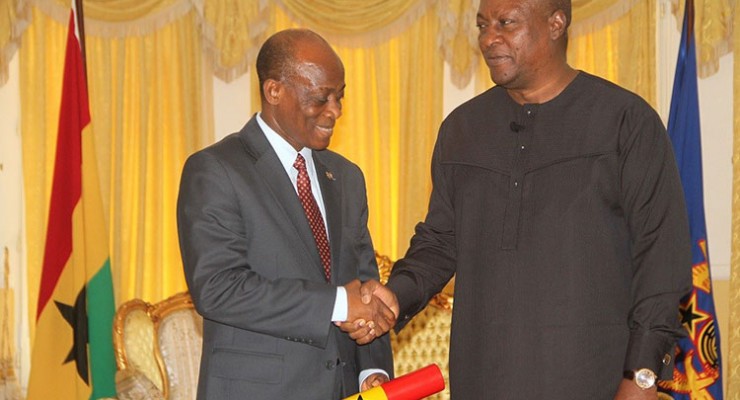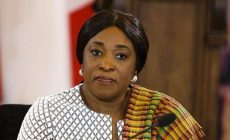Gov’t borrows GH¢5.3bn to pay debts
- Posted on
- Comment
 Government is still contracting loans from both the local and international markets to service debts.
Government is still contracting loans from both the local and international markets to service debts.
A recent one is the issue of a 3-year fixed rate bond to the general public to mobilize GH¢1.5 billion for the restructuring of government debt and also for maturity settlement after it floated a $1 billion (approximately GH¢3.8 billion) Eurobond on the international market.
This is half a billion Ghana cedis more than the amount planned for borrowing on Issuance Calendar for Government of Ghana Securities.
An auction is officially slated for Thursday, October 22, 2015 and each bond carries a face value of GH¢1.
The minimum bid is GH¢50,000 and multiples of GH¢1,000 afterwards, a public notice from the Central Bank, signed by Caroline Otoo, its Secretary, on October 14, 2015, stated.
Interest payment is to be made semi-annually from the date of issue in April and October and the bond is available to both residents and non-residents.
Eurobond proceeds
Proceeds from Government’s fourth Eurobond are said to have hit the accounts of the Bank of Ghana (BoG), BUSINESS GUIDE has learnt.
This was after Finance Minister Seth Terkper and Central Bank Governor Dr Henry Wampah led a government delegation to London, Los Angles, San Francisco, Boston and New York on an 8-day Eurobond roadshow.
Oversubscribed with orders exceeding $2 billion, the bond is a soft amortizing one with tenure of 15 years and billed to mature in 2028, 2029 and 2030.
The principal would be repaid by three installments of $333 million in 2028 and 2029 and US$334 in 2030.
Government, for the whole of this year, has planned to borrow GH¢50 billion, and this is expected to bring to GH¢115 billion, the country’s total public debt if all the scheduled borrowing events come off.
Borrowing threshold exceeded
Ghana has crossed the crucial 70 percent threshold of the debt-to-GDP ratio since December 2014.
Government continues to pride itself as the first to attract such a loan over a 15-year period in sub-Saharan Africa outside South Africa.
Official figures as at May 2015 showed that Ghana’s total public debt grew by GH¢13.4 billion from the GH¢76.1 billion recorded in December 2014 to GH¢89.5 billion, representing some 67.1 percent of GDP.
Ghana’s total public debt, according to Reuters, rose to GH¢94.5 billion ($23.7 billion) by end-June, equivalent to 71 percent of gross domestic product (GDP), up sharply from 67 percent the previous month due to currency depreciation.
Last quarter borrowing plan
In October, government planned to receive GH¢2.4 billion from its 91-day T-bills, GH¢800 million from 182-day T-bills, GH¢120 million from 1-year note, GH¢300 million from 2-year note and GH¢1 billion from 3-year fixed rate bond, all totaling GH¢4.62 billion.
In November, Government planned to collect GH¢2.4 billion from investors through its 91-day T-bills, GH¢1 billion from the 182-day T-bills, GH¢180 million through its 1-year note and GH¢300 million through the 2-year note.
For December, an amount of GH¢4.16 billion is expected from investors made up of GH¢3 billion in 91-day T-bills, GH¢800 million from 182-day T-bills, GH¢60 million in 1-year note and GH¢300 million in 2-year note.
Implications for the economy
Analysts stated that the development would not help the country’s economy to grow.
Others indicated that the frivolous borrowing suggest that monies borrowed earlier were not used for the intended purpose.
By Samuel Boadi










 (Selorm) |
(Selorm) |  (Nana Kwesi)
(Nana Kwesi)